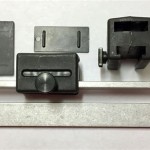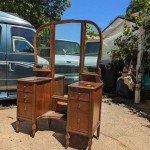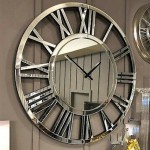Ceiling Hung Vanity Mirror: A Comprehensive Guide
A ceiling-hung vanity mirror represents a modern and often high-end design choice for bathroom spaces. Unlike traditional wall-mounted or freestanding mirrors, these fixtures are suspended from the ceiling, creating a distinctive aesthetic and offering several functional advantages. This article will delve into the various aspects of ceiling-hung vanity mirrors, including their design considerations, installation processes, benefits, and potential drawbacks.
The primary allure of a ceiling-hung vanity mirror lies in its ability to create a sense of spaciousness and airiness. By eliminating the need for wall supports, the mirror appears to float, contributing to a minimalist and uncluttered look. This design choice is particularly effective in smaller bathrooms where maximizing visual space is crucial. Furthermore, the absence of a base allows for easier cleaning and maintenance around the vanity area.
Choosing the right ceiling-hung vanity mirror requires careful consideration of several factors, including the size of the bathroom, the overall design style, and the desired level of illumination. The mirror's size should be proportional to the vanity and the surrounding space. A mirror that is too large can overwhelm the room, while one that is too small may appear insignificant. The design style of the mirror should complement the existing décor, whether it be modern, traditional, or eclectic.
Design Considerations for Ceiling-Hung Vanity Mirrors
The design of a ceiling-hung vanity mirror extends beyond its basic shape and size. The suspension system, which connects the mirror to the ceiling, plays a vital role in both its aesthetic appeal and its structural integrity. Common suspension methods include metal rods, chains, and cables. The choice of material and finish can significantly impact the overall look of the mirror. For instance, polished chrome rods can create a sleek and contemporary feel, while rustic iron chains can lend a more industrial or vintage vibe.
Lighting is another crucial design consideration. While some ceiling-hung mirrors come with integrated lighting, others require separate light fixtures. Integrated lighting can provide even and diffused illumination, which is ideal for grooming and makeup application. Separate light fixtures can offer more flexibility in terms of placement and intensity. Sconces mounted on the adjacent walls or pendant lights hanging above the mirror are common choices for supplementing the lighting.
The shape of the mirror also influences the overall design. Rectangular mirrors are the most common choice, offering a clean and classic look. Round mirrors can soften the lines of a bathroom and add a touch of elegance. Oval mirrors provide a similar effect but with a slightly more elongated profile. Asymmetrical or uniquely shaped mirrors can serve as a statement piece, adding a touch of personality to the space.
Installation Process of Ceiling-Hung Vanity Mirrors
Installing a ceiling-hung vanity mirror is generally more complex than installing a wall-mounted mirror. It requires careful planning and precise measurements to ensure proper alignment and stability. The first step is to locate the ceiling joists, which will provide the necessary support for the mirror. It is crucial to use a stud finder to accurately identify the joists and avoid drilling into hollow areas.
Once the joists have been located, the next step is to install the mounting hardware. This typically involves drilling pilot holes and attaching mounting brackets to the joists using screws. The mounting brackets should be securely fastened to the ceiling to prevent the mirror from swaying or falling. The weight of the mirror should be considered when selecting the appropriate mounting hardware.
After the mounting hardware is in place, the mirror can be suspended from the ceiling using the chosen suspension system. The length of the rods, chains, or cables should be carefully adjusted to ensure that the mirror is positioned at the desired height. It is important to use a level to ensure that the mirror is hanging straight and that it is parallel to the vanity countertop.
If the mirror includes integrated lighting, the electrical wiring must be connected before suspending the mirror. It is essential to follow all local electrical codes and regulations when wiring the light fixture. If you are not comfortable working with electricity, it is best to hire a qualified electrician to handle the wiring.
Finally, once the mirror is securely suspended and the lighting is connected, the area around the mirror should be cleaned and any necessary touch-ups should be made. It is important to periodically inspect the mounting hardware to ensure that it remains secure and that the mirror is hanging properly.
Benefits and Potential Drawbacks
Ceiling-hung vanity mirrors offer several distinct benefits that make them an attractive option for modern bathrooms. One of the most significant advantages is their ability to create a sense of spaciousness and airiness. By eliminating the need for wall supports, the mirror appears to float, which can make a small bathroom feel larger and more open. This design choice also allows for more natural light to penetrate the space, further enhancing the feeling of spaciousness.
Another benefit is the ease of cleaning and maintenance. The absence of a base or frame eliminates potential areas for dirt and grime to accumulate. The area under the mirror can be easily cleaned without having to maneuver around a bulky base or support structure. This can save time and effort when cleaning the bathroom.
From a design perspective, ceiling-hung vanity mirrors can add a touch of sophistication and elegance to any bathroom. Their unique and modern appearance can elevate the overall aesthetic of the space. They can also serve as a focal point, drawing attention and adding visual interest to the room. The various suspension options and shapes allow for customization to match specific design preferences.
However, ceiling-hung vanity mirrors also have some potential drawbacks that should be considered before making a purchase. The installation process can be more complex and time-consuming than installing a wall-mounted mirror. It requires careful planning and precise measurements, and it may be necessary to hire a professional installer. The cost of installation can add to the overall expense of the mirror.
Another potential drawback is the limited adjustability of the mirror. Once the mirror is installed, it is difficult to change its height or position. This is in contrast to wall-mounted mirrors, which can often be adjusted to accommodate different users. It is important to carefully consider the desired height and position of the mirror before installation to ensure that it is comfortable for all users.
The structural integrity of the ceiling is also a critical factor to consider. The ceiling must be strong enough to support the weight of the mirror safely. If the ceiling is weak or damaged, it may be necessary to reinforce it before installing the mirror. This can add to the cost and complexity of the installation process.
Finally, the cost of a ceiling-hung vanity mirror can be higher than that of a traditional wall-mounted mirror. This is due to the more complex design and the higher quality materials that are often used. However, the unique aesthetic and functional benefits of a ceiling-hung mirror may outweigh the higher cost for some homeowners.
In conclusion, a ceiling-hung vanity mirror presents a distinctive and modern approach to bathroom design. Its ability to create a sense of spaciousness, ease of maintenance, and aesthetic appeal make it a compelling choice for homeowners seeking to elevate their bathroom décor. However, potential challenges related to installation, adjustability, and cost should be carefully evaluated before making a decision. Careful planning and consideration of these factors will ensure that the chosen ceiling-hung vanity mirror provides both functionality and style for years to come.

Aquila Ceiling Mounted Mirror Riluxa Com

Sensio Ivy Round Ceiling Hanging Led Heated Bathroom Mirror 600mm Furniture123

Belmont Vanity Mirror Christopher Collection

Pin On Jb

Tehome Ceiling Mount Mirrors For Bathrooms Suspend Black Metal Framed

Element Led Lighted Mirror Electric Lighting Company

Ceiling Mounted Bathroom Mirror Arcadia Argo Matt Black Ceramica Cielo Contemporary Rectangular Metal

How To Pick And Hang The Perfect Bathroom Mirror Roomhints

Bongio Bowling Ceiling Mounted Spout With Mirror Cr Chrome

Hollow Hanging Oval Mirror Ceiling Makeup Bathroom Light Wall Aesthetic Miroir Salle D Large Mirrors Led








